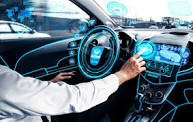In the not-so-distant past, the concept of self-driving cars was relegated to the realm of science fiction. However, as technology advances at an unprecedented pace, autonomous vehicles have transitioned from futuristic dreams to tangible realities. This article explores the current state of self-driving cars, delving into the technological advancements, societal impacts, and the road ahead.
The Technological Landscape:
Self-driving cars rely on a complex web of cutting-edge technologies to navigate the world around them. At the core of this innovation is Artificial Intelligence (AI), which processes vast amounts of data from sensors, cameras, and radar systems. Machine learning algorithms enable these vehicles to continuously improve their decision-making capabilities, adapting to diverse and dynamic driving conditions.
Sensor Fusion: A Critical Component
One key element ensuring the success of self-driving cars is sensor fusion. These vehicles utilize a combination of LiDAR (Light Detection and Ranging), radar, and cameras to create a comprehensive understanding of their surroundings. LiDAR, in particular, plays a crucial role by emitting laser beams to measure distances and create detailed 3D maps, allowing cars to “see” the environment with remarkable accuracy.
Autonomous Driving Levels:
The Society of Automotive Engineers (SAE) defines six levels of driving automation, ranging from Level 0 (no automation) to Level 5 (full automation). Most current self-driving cars fall within Levels 2 and 3, where the vehicle can handle certain tasks but requires human intervention in specific scenarios. Achieving Level 4 and 5 autonomy remains a formidable challenge, with ongoing research and development pushing the boundaries of what is possible.
Safety Considerations:
As self-driving cars become more prevalent on our roads, safety remains a paramount concern. Proponents argue that automation can significantly reduce accidents caused by human error, which accounts for the majority of road incidents. However, skeptics emphasize the need for robust cybersecurity measures to prevent potential hacking threats and the importance of thorough testing to ensure the reliability of autonomous systems.
Societal Impacts:
The advent of self-driving cars is poised to transform various aspects of society. From redefining the commuting experience to influencing urban planning, the ripple effects are extensive. Improved traffic flow, reduced congestion, and increased accessibility for individuals with mobility challenges are among the potential benefits. However, concerns about job displacement for professional drivers and the ethical implications of AI decision-making loom large.
Regulatory Challenges:
The integration of self-driving cars into our daily lives faces regulatory hurdles at both national and international levels. Governments worldwide are grappling with the vehicle development of comprehensive frameworks that balance innovation with safety. Striking the right balance is crucial to foster the growth of the autonomous vehicle industry while ensuring public trust in this transformative technology.
The Road Ahead:
Despite the challenges, the future of self-driving cars appears promising. Major automakers and tech giants continue to invest heavily in research and development, striving to bring fully autonomous vehicles to the market. As the technology matures, we can anticipate a gradual shift toward higher levels of automation, accompanied by a broader societal acceptance of self-driving cars.
Conclusion:
Self-driving cars represent a paradigm shift in transportation, with the potential to reshape our cities, redefine our relationship with driving, and enhance road safety. While the journey toward full autonomy is ongoing, the strides made in technology, safety, and societal integration underscore the inevitability of a future where self-driving cars share our roads. As we navigate this transformative era, striking the right balance between innovation and regulation will be key to unlocking the full potential of autonomous vehicles.



